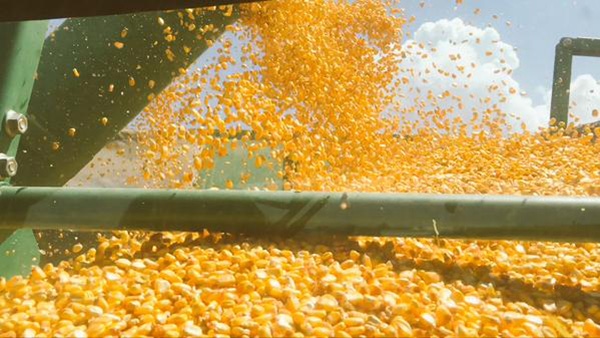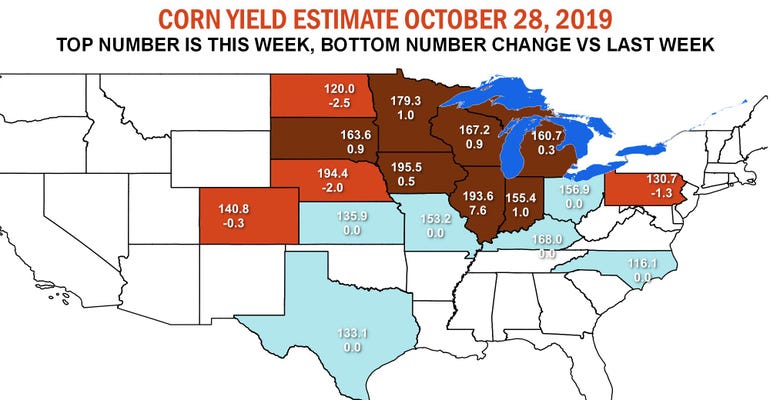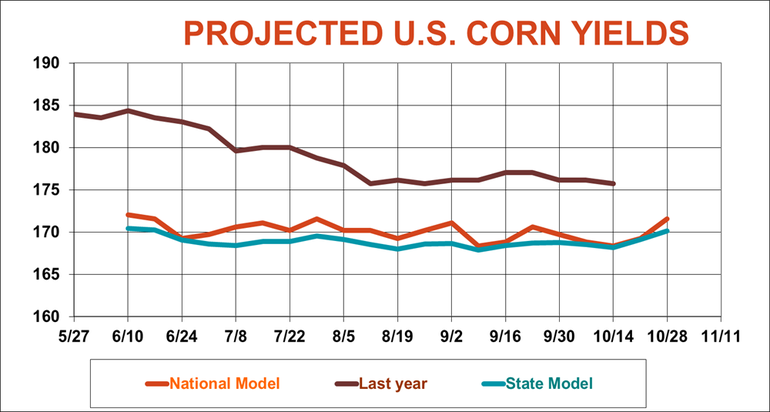
The 2019 U.S. corn harvest continues to drag along, with only another 11% completed this past week, according to the latest USDA crop progress report, out Monday afternoon.
Only 41% of the crop has been harvested as of October 27, up from 30% a week earlier but down two points from analyst estimates and still 20 points behind 2018’s pace and the prior five-year average. And although 93% of the crop is mature (up from 86% a week ago), all of the crop is typically mature by this time of year.
A quick state-by-state look shows that some key production states still have a long road ahead. In Iowa, for example, just 26% of the crop has been harvested. Minnesota (21%), South Dakota (14%) and North Dakota (7%) have also seen very few harvesters rolling so far.

USDA maintains that corn crop quality is on the rise, in contrast, moving ratings from 56% in good-to-excellent condition a week ago up to 58%. Analysts had expected the agency to hold quality ratings steady this week. Another 30% of the crop is rated fair (unchanged from a week ago), with the remaining 12% rated poor or very poor (down two points from a week ago).
“Today’s report from USDA confirmed what farmers told us last week on Feedback From The Field: Corn conditions and yield estimates improved,” according to Farm Futures senior grain market analyst Bryce Knorr. “Our yield projections based on conditions scored moved to some of the best levels of the season. The yield estimate based on the nationwide rating jumped 2.3 bushels per acre to 171.6 bpa, while the yield estimate based on the state-by-state breakdown was up 1 bpa to 170.1 bpa.”

Stress from the October cold snap and blizzard across parts of the western Corn Belt continue to be felt, with ratings down in North Dakota, Nebraska and Colorado, Knorr adds. But a big improvement in Illinois and smaller gains in Indiana and Iowa more than offset those losses, he notes.
“Next week’s ratings likely will be the last of the season if farmers make sufficient harvest progress this week,” Knorr says. “Without another big adjustment this suggests key to total production could be harvested acreage and loses from the blizzard. USDA will update its survey of harvested acres in its Nov. 8 production, supply and demand report, but even this may not catch the final extent of what was left in the field or cut for silage instead of being harvested for grain.”
Soybean harvest is on a pace that’s also lingering moderately behind recent years, reaching 62% as of October 27. That’s up from 46% a week ago and inline with analyst estimates, but still below 2018’s pace of 69% and the five-year average of 78%. Ninety-seven percent of the crop is dropping leaves, versus a typical pace of 100% in recent years.
With more than half of this year’s crop harvested, USDA is no longer tracking quality ratings.
Winter wheat planting progress, meantime, is slightly ahead of the pace of recent years after reaching 85% completion this past week, versus 2018’s pace of 77% and the five-year average of 82%. A few outliers among the top 18 production states include North Carolina (22%), California (25%) and Missouri (43%).
Winter wheat quality kicked off the season with an initial rating of 56% in good-to-excellent condition, slightly higher than a year ago. Another 31% of the crop is rated fair, with the remaining 13% rated poor or very poor.
“As usual, these initial yield projections show differences between our two models,” Knorr says. “The U.S. rating translates to a yield of 48.5 bpa, while the state model is higher at 50.6 bpa. Last year’s state model ended up at 52.9 bpa, while USDA’s final estimate was 53.6 bpa. Conditions are significantly lower than last year for soft red winter wheat states while hard red winter wheat states appear to be off to a better start.”
Click here to access the latest crop progress report from USDA, which has additional updates for sorghum and southern row crops.
About the Author(s)
You May Also Like






